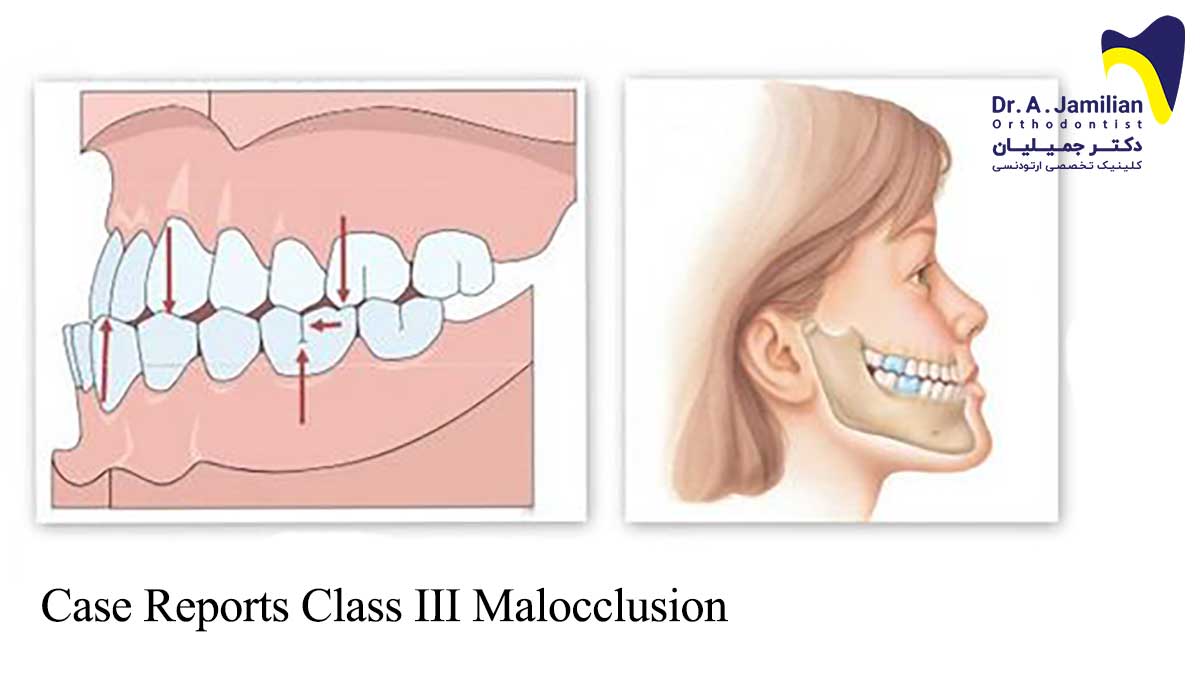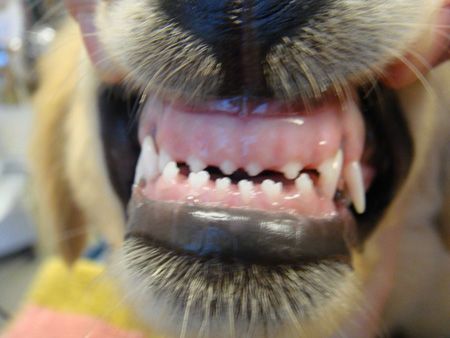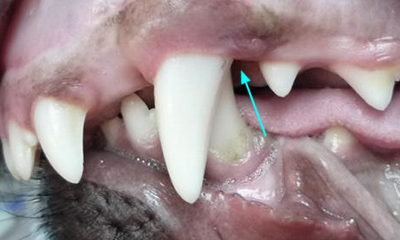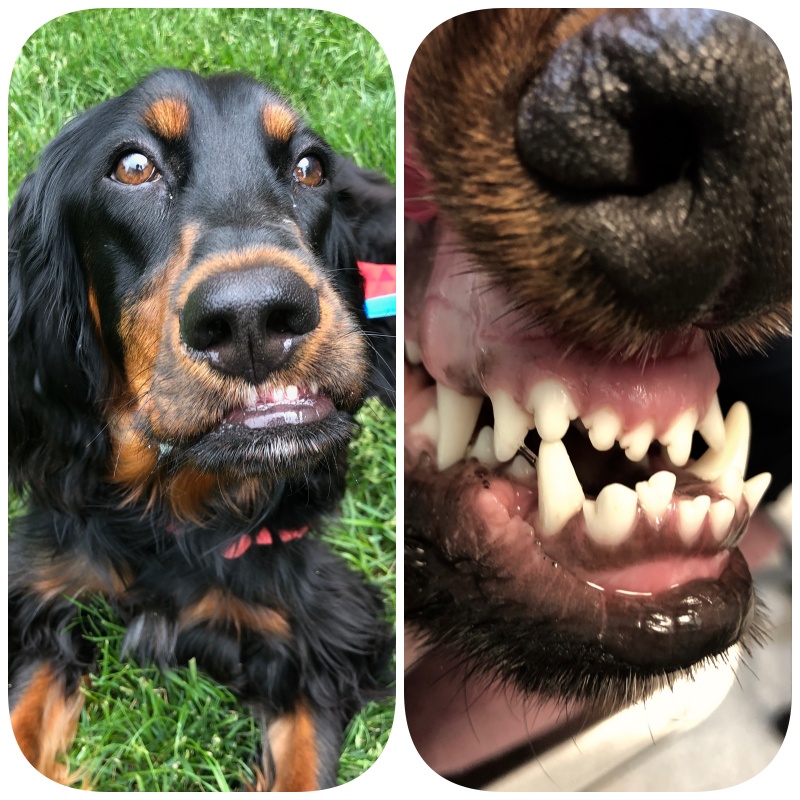class iii malocclusion dog
Mandibular mesioclusion or Class 3 Malocclusion MAL3. Malocclusion can present without significant symptoms or can be severely debilitating.

That Bites Dental Malocclusions And Abnormal Bites In Pets Vet In Aurora The Animal Dental Clinic
The current case report describes a compensatory alternative for Class III malocclusion treatment by means of mandibu- lar canine extractions.

. Orthodontic presentation is possible but class II overjet III underjet and linguoversed mandibular canines are the most common presentations. In rostral crossbite cases similar to anterior crossbite in people one or more of the mandibular incisor teeth are labial to the opposing maxillary incisor teeth when the. Sadly this serious craniofacial abnormality is considered breed standard for a great many breeds of dog and several breeds of cats the brachycephalics despite this anatomy being associated with a great many liabilities that negatively impact health and quality of life.
Class III malocclusions are commonly seen in brachycephalic dogs boxers pugs boston terriers etc. Depending on the class of malocclusion palatinegingivalliptooth trauma can occur. The Class III malocclusion was treated establishing occlusal and facial normal standards.
Jaw lengths are normal but one or more teeth are in an abnormal position Photo 4. Canine impaction can be detected by a delay in eruption the absence of a canine bulge on a clinical exam and concurrent radiography. 7 as well as anterior segment photographs Fig.
Mandibular mesioclusion or Class 3 Malocclusion MAL3. An underbite occurs when the mandibular lower jaw teeth protrude forward relative to the maxillary upper jaw teeth. The maxilla is too short relative to the mandibles.
Class IV malocclusions result from asymmetrical development of the. Examples include lance canine rostral crossbite caudal crossbite and level bite. Intraoral examination revealed an asymmetric Class III malocclusion lingual crossbite of the upper right first molar UR6 anterior crossbite from canine to canine UR3-UL3 missing UR2 peg-shaped UL2 and upper midline deviation 4mm.
Golden retriever Labrador retriever standard poodle bull terrier German shepherd and more recently mixed breeds involving poodles. Surgical-orthodontic treatment of Class III malocclusion with agenesis of lateral incisor and unerupted canine. Class III Malocclusion.
What kind of dogs have an underbite. A Class 1 malocclusion linguoversion of tooth 704 in a 10-week-old golden doodle. I saw a 10-week-old puppy recently with a malocclusion that.
Skeletal Class III malocclusions are ideally treated with orthodontic-surgical approaches. Class III malocclusions are considered underbites in dogs and cats. Photos courtesy John Lewis.
The comprehensive management of a Class III malocclusion must consider the risk of late mandibular growth. Causes of malocclusion Malocclusion in dogs is usually hereditary which means the condition is passed down to future generations. It can be classified as rostral or caudal.
Extraction of the offending was resolved the traumatic occlusion. Malocclusion in dogs and cats Peter Southerden Tuesday May 2 2017 Malocclusion involves abnormal relationships of teeth to each other and other oral structures. Cephalometric and panoramic radiographs Fig.
The mandibular incisor cusps should rest on the cingulum on the palatal side of the maxillary incisors. Anecdotally this traumatic malocclusion is overrepresented in the following breeds. Also known as an underbite undershot reverse scissor bite and mandibular prognathism.
The mandible resides mesial rostral to. Neutroclusion Class 1 malocclusion. What is class 3 malocclusion dog.
The mandible resides mesial rostral to its normal location in relation to the maxilla Photo 6. Class III malocclusions are considered underbites in dogs and cats. Occlusion is a contact between the incising or masticating surfaces of the maxillary and mandibular teeth.
There are 6 persistent deciduous teeth present in this picture causing several teeth to erupt in the wrong position. This is a type III malocclusion in a dog- the lower jaw is longer than the upper jaw by about 12 an inch. However if there are no significant soft tissue implications and the patient does not want to undergo orthognatic surgery other treatment options may be considered.
Normal occlusion in the dog and cat is also known as a scissors bite. Also known as an underbite undershot reverse scissor bite and mandibular prognathism. In order to detect a malocclusion it is important for veterinary surgeons and veterinary nurses.
Class 3 malocclusions are also known as an underbite. In conclusion Class II malocclusions and linguoversed man- dibular canine teeth result in traumatic contact of maxillary teeth and tissues leading to pain periodontitis endodontic dis -. The mandibles are longer in respect to their normal relationship to the maxilla.
Skeletal Class III Malocclusion with Canine Transposition and Facial Asymmetry anterior crossbite extended from the right lateral incisor to the left 2ndpremolar. Mandibular distocclusion has been diagnosed in many breeds including mixed breed dogs and cats. Although considered normal in brachycephalic breeds maxillary incisor contact with the lingual floor or canine teeth can cause significant trauma and discomfort.
Mandibular mesioclusion Class 3 malocclusion. It occurs when the lower jaw is too long relative to the upper jaw and the lower teeth protrude in front of corresponding upper teeth. The mandibular teeth should occlude lingual to the maxillary teeth.
A malocclusion in which a mandibular tooth or teeth have a more buccal or labial position than the antagonist maxillary tooth. Figure 2a One major difference between adult and deciduous malocclusions is the anatomy of the teeth involved. Compensatory Class III malocclusion treatment associated with mandibular canine extractions.
B Mild Class 2 malocclusion in a 55-month-old mixed-breed dog. Three classes of symmetrical malocclusions occur in dogs. 10 document the complexity of the malocclusion.
Severe Class III Malocclusion in a Dog Underbite By Dr. It occurs when the lower jaw is too long relative to the upper jaw and the lower teeth protrude in front of corresponding upper teeth. Brett Beckman on March 27 2011 This Scottish Terrier dog had a severe Class III malocclusion resulting in canine trauma from the maxillary intermediate incisors and lingual floor trauma from the maxillary central incisors.

Defining Dental Malocclusions In Dogs Is The First Step Toward Treatment

Canine Classification A Class I Canine With The Maxillary Canine Download Scientific Diagram

Malocclusions In Dogs And Cats Centennial Animal Hospital

Treatment Of Class Ii Malocclusion With Tooth Movement Through The Maxillary Sinus American Journal Of Orthodontics And Dentofacial Orthopedics

Malocclusion In Dogs And Cats The Veterinary Nurse
Helping Your Puppy With Teeth Misalignment Malocclusions

Case Reports Class Iii Malocclusion Dr Jamilian

Zerodonto Malocclusions Facebook

Identifying Problems Early In A Puppy Or Kitten Mouth

Feature Oral Health Issues In The Dog Developmental Abnormalities Malocclusions By David E Hansen Dvm Favd Davdc

Severe Class Iii Malocclusion In A Dog Underbite

Canine S Classification Download Scientific Diagram

Patient 3 Had A Class Iii Malocclusion With An Impacted Maxillary Right Download Scientific Diagram

Read This Dentistry Article By Katie Rankin Bs Rvt

Malocclusions In Dogs And Cats Centennial Animal Hospital

Overbite Veterinary Dental Center Malocclusion In Pet

Brett Beckman Dvm Favd Davdc Daapm Severe Class Iii Malocclusion In A Dog Underbite Https Veterinarydentistry Net Severe Class Iii Malocclusion In A Dog Underbite This Scottish Terrier Dog Had A Severe Class Iii Malocclusion Resulting In

